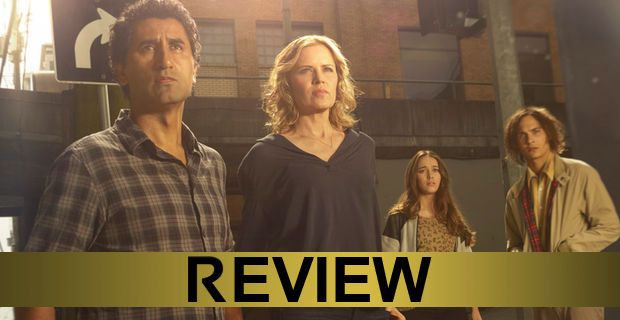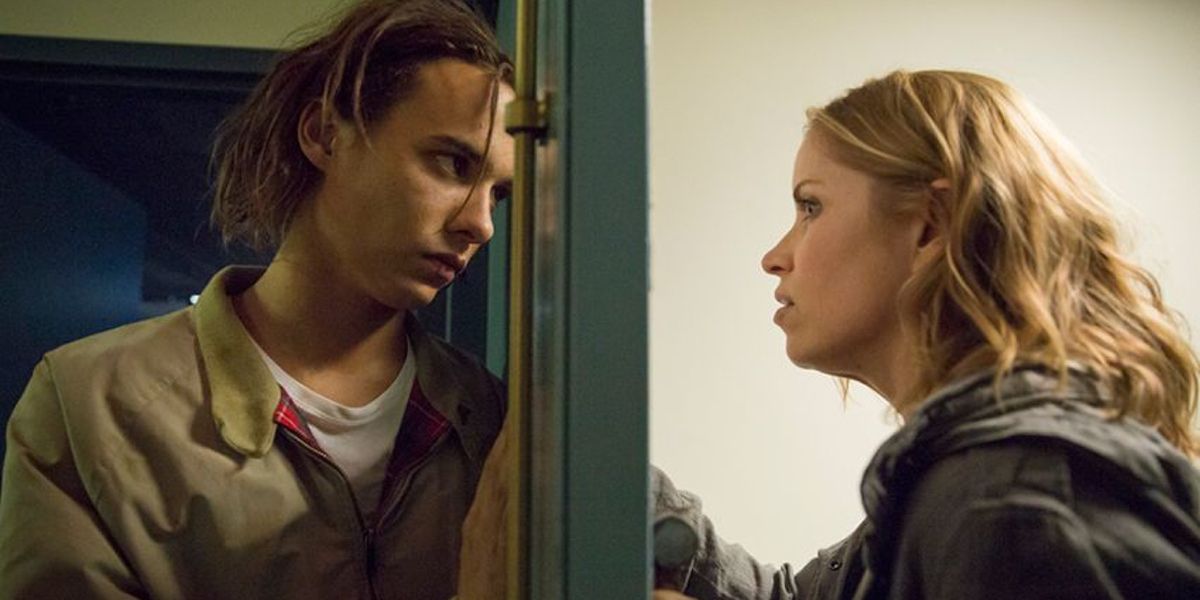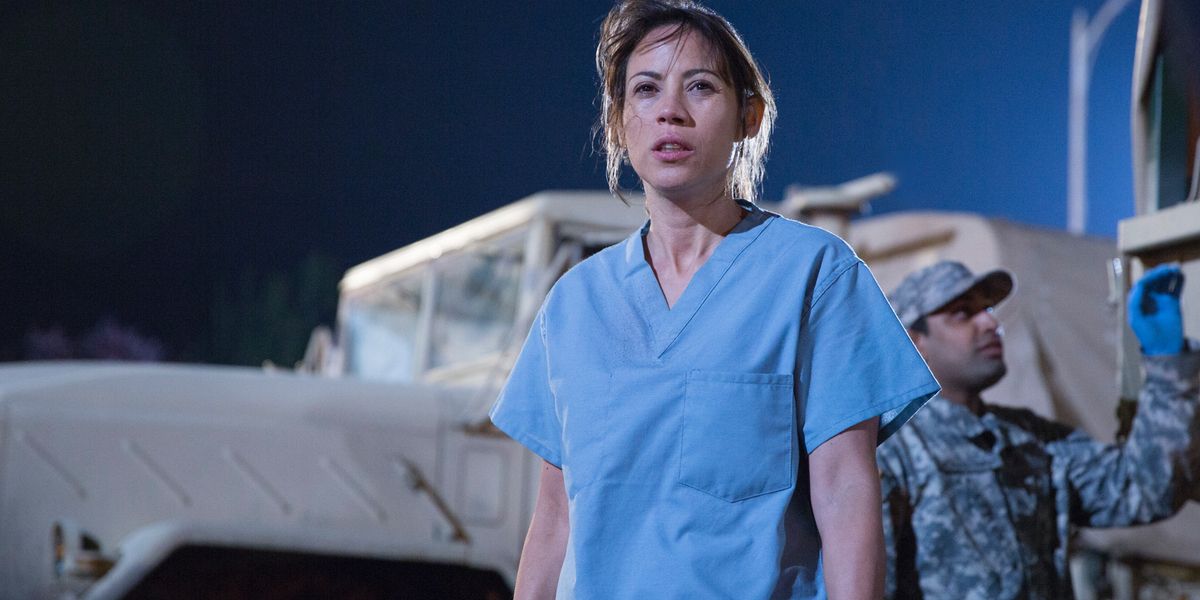[This is a review of Fear the Walking Dead season 1, episode 6. There will be SPOILERS.]
-
One of the defining characteristics Fear the Walking Dead made sure to maintain during its first season was the idea that its characters would have a limited perspective of the world and, subsequently, of the events bringing that world to its knees. This is usually how these types of fictional end-of-the-world scenarios go: a group of plucky individuals find themselves thrust into an increasingly worsening situation, and by the time they are made aware the gravity and scope of what is going on, it's too late; the world they knew has gone to hell in a handbasket.
While it is common for apocalyptic films to utilize this perspective as a means of building narrative tension, the same method felt decidedly unique during the first five episodes of Fear. The show made a conscious effort to maintain a visual aesthetic that not only relied heavily on characters peering out windows, through blinds, or otherwise into situations where they can only see a fraction of what is actually going on, but it also limited what the viewer was able to see. Tight shots of actors' faces were utilized in lieu of wide-angle shots showing seething masses of the undead or a city in ruins. This was primarily the biggest success of Fear in its first season; it gave the show a sense of identity. It also helped make the eventual shift to big, splashy visuals featuring zombie hordes and a burning Los Angeles feel all the more evincive of where the show is headed.
But that is also one of the downsides of how this first season ended: the characters are now more or less in the world of The Walking Dead. What made this companion series special was the idea it would take place during a time where the tension between life as people know it and, for lack of a better term, the end of days, was building to an almost unbearable level. The show released all of that tension here. And while it makes sense to have a big payoff in the finale, it comes at the expense of this show's identity.
While seeing the show sacrifice its defining characteristic in an effort to become more like the insanely popular series that birthed it presents a challenge of individuality moving forward, the final shot of Travis and Madison kneeling before the Pacific Ocean didn't just place the overall narrative of Fear in the same realm as TWD, it forced the characters to adopt a similar ideology. For the most part, that means living has been reduced to surviving, and, when the time comes for it, abandoning certain closely held beliefs in order to survive.
When it gets right down to it, this is probably the biggest idea The Walking Dead universe has to offer, and it may also be the source of its appeal: The notion that life can be whittled down to the impulse of survival and that everyone has to become the same ruthless individual in order to ensure they carry on. It is essentially a reduction of everything to the lowest common denominator. The world is shrunk and narrowed to what can be seized and what it takes to survive. That can present some interesting challenges from a storytelling point of view; namely, how to keep the show from becoming a relentless, nihilistic slog, and how can the writers depict that shift in people who previously existed on a different political and ideological spectrum?
To the writers' credit, 'The Good Man' certainly tries to raise such questions during the finale. And they do so by focusing on Travis, Strand, and Nick – three characters who have been defined by their specific, previously divergent worldviews. What the episode makes an interesting point of, though, is how these three characters' perspectives all essentially converge by the end. For all we know, Strand has always been the way he is, so that character may not have been changed by the apocalypse so much as he's just been sitting tight, waiting for it to happen. At the same time, thanks to his addictions, Nick has basically been living in a personal version of the apocalypse for some time. Like Strand, he's been waiting; but rather than wait for an event to validate his ruthless worldview, Nick has been waiting for everyone to join him in a world where just getting through the day is some sort of amazing success.
The contrast of Strand and Nick is interesting, and it's in keeping with how Fear the Walking Dead wants to tell its story from the perspective of very specific characters. And while its true that most of these characters are fairly standard archetypes, the effect of narrowing the focus doesn't diminish the significance of the transition. Perhaps most dramatic of the three, then, is Travis, who has gone from an optimistic pacifist to a man who carries a gun with him and beats other men senseless (possibly to death) when they represent a significant physical threat. This shift happened somewhat quickly, but then again, so too did the end of the world.
In bringing the show into the realm of The Walking Dead, Fear had to say goodbye to its identity, the thing that made it unique. By the end of the first season, Los Angeles is on fire and the world, presumably, along with it. The skyline of downtown LA is still recognizable, but the changes are apparent; they seem irrevocable and are clearly for the worse. In its own way, 'The Good Man' makes those irrevocable, worsening changes apparent in its cast of characters, too, but it does so in a way that insinuates the transition will be more compelling than perfunctory.
Perhaps most telling, then, is that Liza's death – i.e., the death of the one character whose skillset could have had a positive impact on this group moving forward – underlines the rapidly shifting values of this particular world by making it such an intimate affair. If Fear the Waking Dead got anything right during its brief, six-episode first season, it would be the idea that the end of the world may unite everyone on Earth, but the story lies in the individual experiences that are still dramatically different and carry with them their own unique identity.
As the series moves forward, it will be interesting to see how it embraces that notion and continue to strive for individuality and a clear and consistent identity.
Next: Fear the Walking Dead: Flight 462 Part 1 – Fear Prepares For Takeoff
Fear the Walking Dead will return with season 2 in 2016.



